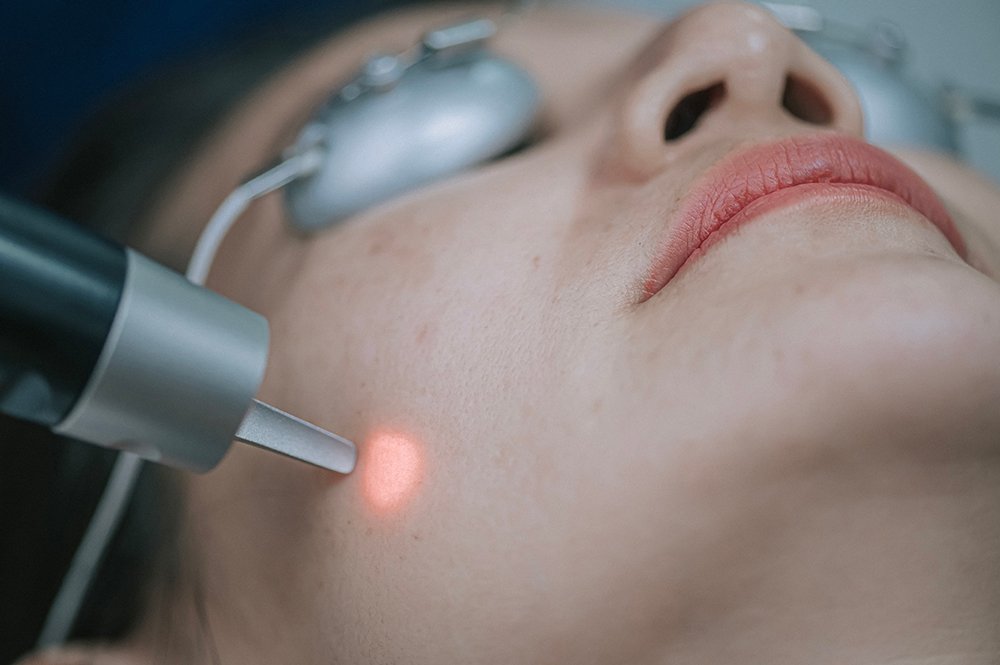
Can Laser Treatments Really Help Prevent Skin Cancer?
Lasers have long been used to smooth wrinkles and fade sun spots, but new research is raising a bigger question: could they also help lower the risk of skin cancer? Studies in recent years have found that patients who underwent fractional laser resurfacing developed fewer new skin cancers over time compared to those who didn’t. With millions of Americans diagnosed each year, should more people be looking at laser treatments as a way to lessen their risk? We asked top dermatologists to explain what the data really means and where lasers fit into a smart prevention plan.
Featured Experts
- Dr. Jacob Beer is a board-eligible dermatologist in West Palm Beach, FL
- Dr. Jeanine Downie is a board-certified dermatologist in Montclair, NJ
- Dr. Janice Lima Maribona is a board-certified dermatologist in Miami
Lasers for Treating Precancerous Spots
Fractional lasers, already used to refine texture and pigmentation, are proving especially useful for patients with precancerous lesions. Devices like Fraxel Dual and LaseMD (a thulium 1927 nm laser) can remove damaged cells before they progress into something more serious. “They really help with actinic keratoses,” explains West Palm Beach, FL dermatologist Jacob Beer, MD. “Patients prefer this over liquid nitrogen, which can leave white spots or scarring. Fractional lasers work across all skin tones and allow us to treat both visible lesions and the subclinical damage we can’t yet see.”
In addition to prevention, some lasers can also be used as treatment. Laser ablation is sometimes an option for early, superficial basal cell and squamous cell carcinomas, providing a less invasive approach in select cases.
Ablative technologies, including CO₂ and erbium lasers, reach deeper to resurface broad areas of photodamage. Montclair, NJ dermatologist Jeanine Downie, MD, notes that these devices “definitely help with sun damage and actinic damage in the skin,” but stresses they are not a substitute for regular dermatology visits. Patients with a history of skin cancer still need full-body checks every six to twelve months.
Where Lasers Help and Where They Don’t
Not all cancers respond the same way. While ablative and fractional lasers are effective for actinic keratoses and may lower the risk of basal and squamous cell carcinomas, they don’t help with melanoma. “For melanoma, resurfacing lasers are not helpful,” notes Miami dermatologist Dr. Janice Lima-Maribona. “Where lasers shine is in managing squamous cell and basal cell cancers and especially precancerous actinic keratoses.”
That distinction is critical for patients considering lasers as a preventive step. As Dr. Beer points out, their strength lies in targeting the damage beneath the surface, before it becomes clinically visible. “By penetrating slightly beneath the skin, lasers can be preventative and help stop new precancerous lesions from developing.”
Early But Promising
The role of lasers in skin cancer prevention is still evolving says Dr. Beer. “There are only a handful of studies, and we’re on the early side of proving long-term prevention,” he notes. “The data is exciting, but it’s not yet considered standard of care.” For now, dermatologists view lasers as an add-on to, not a replacement for, proven approaches like skin checks and sun protection.
Don’t Forget the Basics
As high-tech as laser devices get, the experts say nothing cancels out the need for sunscreen every single day. “The best thing you can do is protect your skin from the time you’re a baby,” says Dr. Beer, who recommends SPF 30 or higher, ideally tinted with iron oxide for visible light protection. He notes that indoor exposures also matter: “Blue light from phones and computers and infrared heat from cars or ovens all contribute to cumulative damage,” he explains.
Dr. Downie agrees, adding that while laser treatments can help erase some of that history, patients still need lifelong vigilance. “Lasers can do a lot to repair past sun damage, but they are not a free pass to skip sunscreen,” she says. “Patients need lifelong vigilance, which means daily SPF, protective clothing and regular skin checks with their dermatologist.”
The Takeaway
Lasers are showing real promise as a tool for reducing precancerous lesions and potentially lowering future skin cancer risk. They aren’t a cure-all and won’t replace full-body skin checks or diligent sunscreen use, but for patients with significant sun damage, fractional and ablative devices may become an important addition to long-term prevention.
![]()


